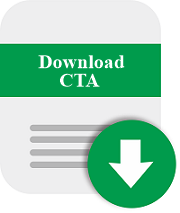ISLAMIC GOLD DINAR: THE HISTORICAL STANDARD
DOI:
https://doi.org/10.18196/ijief.116Keywords:
Gold Dinar, History of the Gold Dinar, Standard WeightAbstract
Lately, there have been questions on what the standards for gold dinar and silver dirham should be. Since the dinar and dirham indeed formed the Shari’ah monetary standards from the time of the Prophet pbuh, our work can, therefore, only involve in the rediscovery of that classical standard. Henceforth no parties or organizations can come up with their own standards. Since the Islamic gold dinar[1] did not come into existence until about 50 years after the Prophet’s pbuh demise, it is obvious from history that the solidus of the Eastern Roman Byzantine Empire was the monetary basis for the Shari’ah. Hence the best way to determine the standard is to look at the definition given by its issuer, the Byzantine Empire. Coins unearthed by archeologist cannot be relied upon for this purpose because such coins generally suffer from wear and possible tempering like clipping etc. It was found that the actual historical standard for the dinar to be 4.5gm of pure gold and the dirham to be 3.15gm of pure silver. However, since the role of dinar is simply as a measure of value that depends on the gold-content of the coin and if zakat is based upon 1-year’s provision of foodstuff and not the physical weight of dinars, then the 4.25gm dinar of pure gold and 2.975gm dirham of pure silver, as those circulated during the Prophet’s pbuh era, is the standard since the Prophet had said, “The system of weights and measures is the system of the people of Medina.
References
Bernstein, Peter L., The Power of Gold – The history of an obsession, John Wiley, 2000
Ibn Khaldun, al-Muqaddimah – An Introduction to History, trans. Franz Rosenthal, Princeton University Press, 1958.
Porteous, John (1969). "The Imperial Foundations". Coins in history : a survey of coinage from the reform of Diocletian to the Latin Monetary Union.. Weidenfeld and Nicolson.
Subhì, Salih (1976). al-Nuzum al-Islamiyya (Islamic Systems). Beirut: Dar al-Alim
Kitab Adh-Dharaib fi as Sawad
Hunwick, John, Islamic Financial Institutions: Theoretical Structures and Aspects fo the Application in Sub-Saharan Africa, in Credit, Currencies and Culture – African Finanical Institutions in Historical Garrard Perspaectiv, Ed. Endre Stiansen and Jane I. Guyer, Elanders Gotab, Sweden, 1999. P86
Timothy, Akan, Weights and the Gold Trade, London 1980,
Jastram, Roy, The Golden Constant,, John Wiley, 1977.
Downloads
Published
How to Cite
Issue
Section
License
License
This journal is based on the work available at http://journal.umy.ac.id/index.php/ijief/ under a license from Creative Commons Attribution-ShareAlike 4.0 International License.
You are free to:
- Share – copy and redistribute the material in any medium or format.
- Adapt – remix, transform, and build upon the material for any purpose, even commercially.
The licensor cannot revoke these freedoms as long as you follow the license terms, which include the following:
- Attribution — You must give appropriate credit, provide a link to the license, and indicate if changes were made. You may do so in any reasonable manner, but not in any way that suggests the licensor endorses you or your use.
- ShareAlike — If you remix, transform, or build upon the material, you must distribute your contributions under the same license as the original.
- No additional restrictions — You may not apply legal terms or technological measures that legally restrict others from doing anything the license permits.
Creative Commons Attribution-ShareAlike (CC BY-SA)

This work is licensed under a Creative Commons Attribution-ShareAlike 4.0 International License.


